If you are looking for vibrant colours and beautiful textures in your home garden, look no further than Ranunculus Bulbs! Not only do these bulbs produce instant gratification when they start to bloom, but with the right care and attention, they will also give you years of enjoyment.
Their distinct cup-shaped blooms come in a variety of shapes, sizes, and colours – making them one of the most sought-after flowers by gardeners everywhere.
In this blog post, I’ll be giving you an informative rundown on what these bulbs are all about as well as how to plant and care for them so that you can get the very best out of this captivating flower.
So if brightening up your landscape is something on your agenda then buckle in because it’s time to learn everything there is to know about planting Ranunculus Bulbs!
How to Plant Ranunculus Bulbs
The best time to plant Ranunculus Bulbs is in the late summer or fall when the soil temperatures are cooler. To get started, you’ll need to purchase some high-quality bulbs that have been specially treated for planting. Make sure the bulbs are plump and firm and free of any signs of disease or damage.
Once you’ve got your bulbs ready to go, it’s time to start planting. First, dig a hole about twice as deep and three times as wide as the bulb itself in an area that gets plenty of direct sunlight.
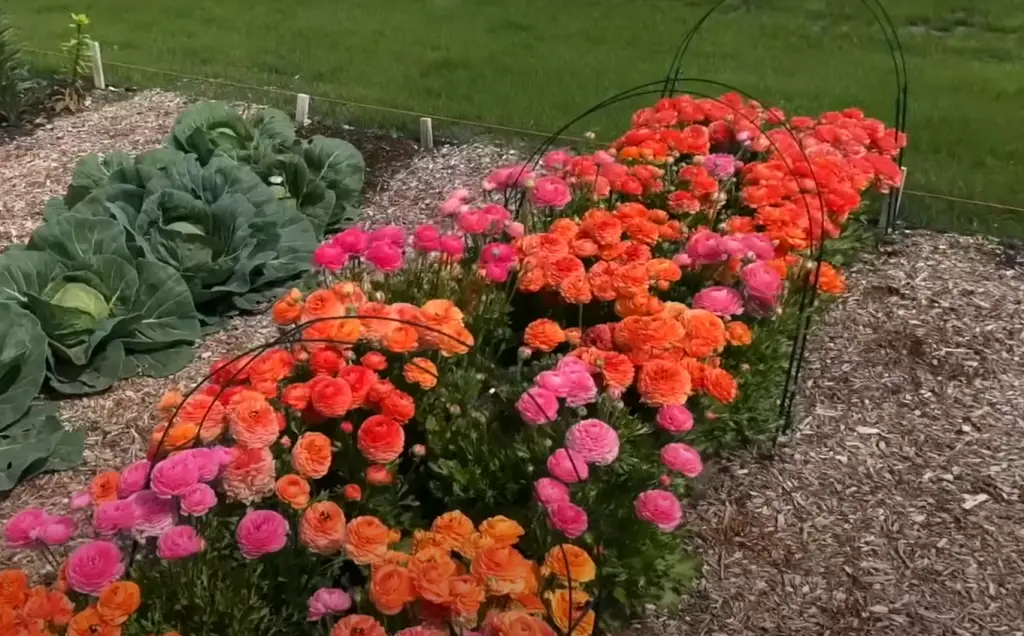
Then, place the bulb carefully into the hole with the pointy side facing up and cover it with soil. Make sure you don’t compact the soil too tightly as this could cause the bulb to rot and die.
Once you’ve planted all your bulbs, give them a good watering to help them settle into their new home.
When it comes time for the blooms to appear, you can expect some vibrant colours in yellow, orange, pink and red – just make sure that you protect them from any extreme temperatures or high winds as this could cause them to suffer.
How to Care for Ranunculus Bulbs
Caring for your Ranunculus Bulbs is much easier than you may think. For starters, make sure that the soil remains moist but not waterlogged as this could cause the bulbs to rot.
You can also fertilise them with a balanced plant food every two weeks during their growing season – this will help to keep them healthy and ensure they produce plenty of flowers.
Another great tip is to deadhead the blooms as soon as they start to fade. This will encourage the plant to create more buds and extend its flowering season for months on end.
It’s also important that you remove any damaged or diseased foliage throughout the growing season – this will help keep your Ranunculus Bulbs in tip-top shape and ensure that they reach their full potential.
Finally, once the growing season has come to an end, it’s time to prepare your Ranunculus Bulbs for winter. To do this, simply cut back the foliage and remove any remaining debris from around the bulbs.
Then, cover them with a layer of soil or mulch until spring when you can start the process all over again!
How to Store Ranunculus Bulbs
If you want to store your Ranunculus Bulbs over winter, the best way to do this is by digging them up and placing them in paper bags or boxes.
Make sure that you label each bag or box with the variety of bulbs inside as well as the date they were dug up so that you can easily identify them later on.
When to Plant Ranunculus Bulbs
When it comes to planting Ranunculus Bulbs, timing is everything. As previously mentioned, the best time to plant them is in late summer or fall when temperatures are cooler and the soil has had time to settle.
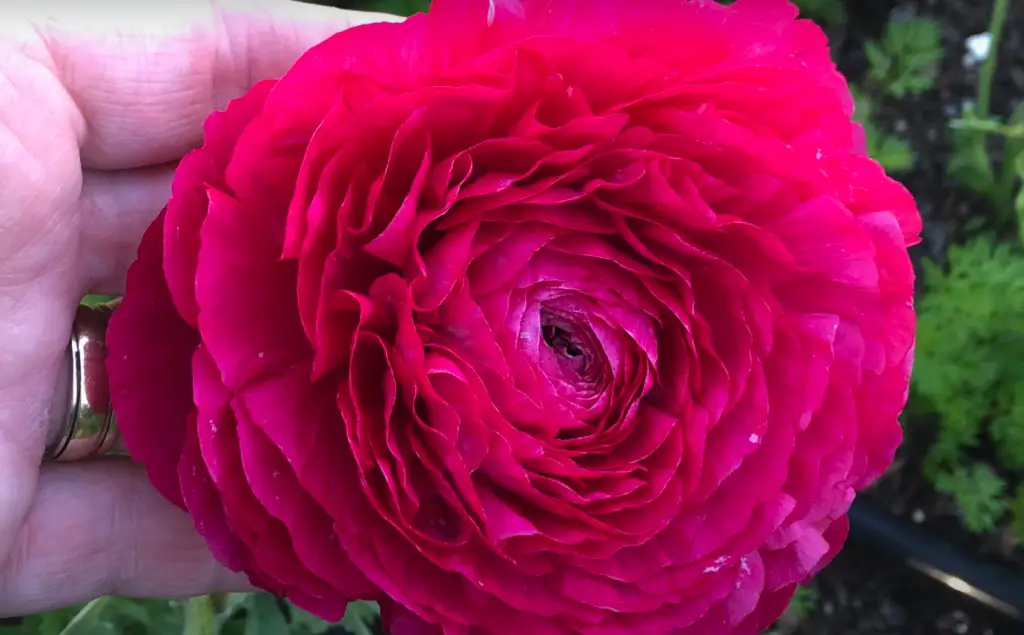
Where to Plant Ranunculus Bulbs
Ranunculus Bulbs prefer an area of your garden that gets plenty of direct sunlight and has well-draining soil. A sandy loam soil is ideal for these bulbs as it allows air to circulate freely around the roots, which helps promote healthy growth.
Alternatively, you can also plant Ranunculus Bulbs in containers or window boxes for a more colourful display.
Planting and caring for Ranunculus Bulbs is a great way to add some vibrant colour and texture to your garden.
With the right care and attention, you can expect these captivating flowers to bloom in all of their glory year after year – making them an absolute delight for any keen gardener!
How to Soak Ranunculus Corms
Soaking Ranunculus Corms is a great way to encourage healthy growth and abundant blooms. The best time to soak your corms is before planting them in the ground. To do this, simply place the corms in a bowl of lukewarm water and allow them to sit for about 10-15 minutes.
This will help to soften the corms and make them easier to plant. Make sure that you discard any corms that don’t look healthy or have signs of disease before planting them in your garden.
When you’re ready to plant, always ensure that you’re planting at the appropriate depth – usually around three times as deep as the height of the corm.
After planting, give your corms a good drink of water and add a layer of mulch to help retain moisture. With the right care and attention, you can expect beautiful blooms in no time!
How to Pre-Sprout Ranunculus Corms
Pre-sprouting your Ranunculus Corms is a great way to get an early start on the growing season and have vibrant blooms sooner. To pre-sprout your corms, you’ll need to plant them in a shallow tray filled with potting soil.
Make sure that you don’t cover the corms completely as this will prevent them from sprouting.
In no time at all, your corms should start to sprout and develop roots. Once this has happened, you can carefully transplant them into your garden or containers.
With pre-sprouted Ranunculus Corms, you can expect to see blooms earlier in the season – making them an ideal choice for anyone who loves colour! [2]
Transplanting Pre-Sprouted Ranunculus Corms
When it comes time to transplant pre-sprouted Ranunculus Corms into your garden or containers, always make sure that you handle them with care. Gently dig a hole twice as deep and three times as wide as the corm itself and place it gently into the hole. Cover the root ball with soil, making sure not to compact it down too tightly.
What to Expect from Your Ranunculus Bulbs
Ranunculus bulbs are a wonderful addition to any garden, providing vibrant colour and texture from early spring right through to late summer.
With the right care and attention, you can expect your Ranunculus Bulbs to produce plenty of beautiful blooms in yellow, orange, pink and red – making them an absolute delight for any keen gardener!
Tips for Growing Ranunculus Bulbs
Growing Ranunculus is an easy and rewarding experience, especially if you keep the following tips in mind. Firstly, always make sure that your bulbs have plenty of sunlight to help them reach their full potential.
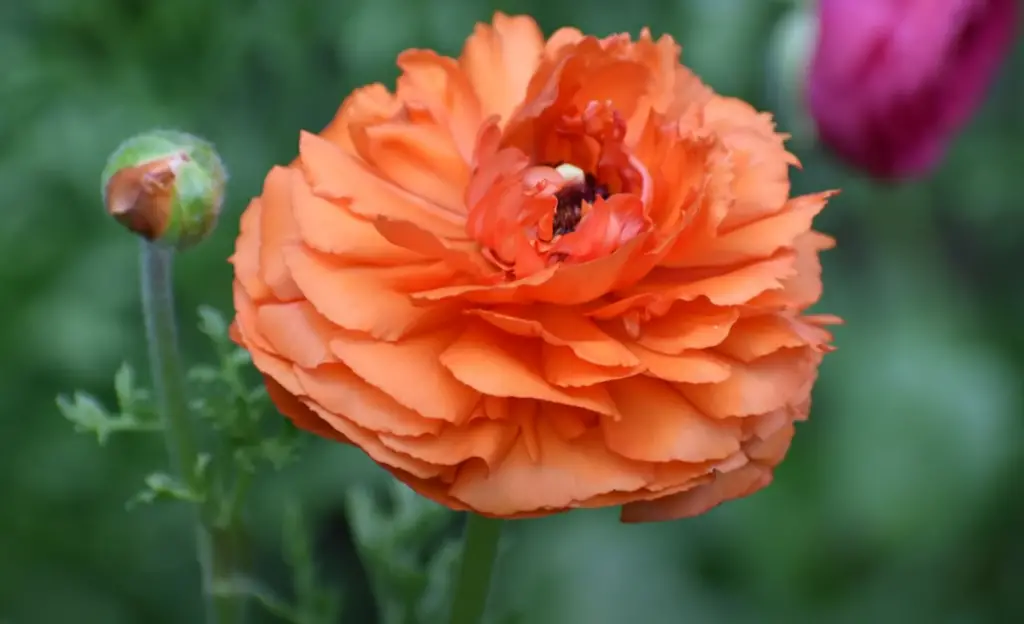
Secondly, keep the soil evenly moist but not waterlogged as too much moisture can cause the bulbs to rot.
Finally, deadhead any fading blooms to encourage more buds and extend the flowering season for months on end.
FAQ
Do ranunculus need to be soaked before planting?
Yes, it is beneficial to soak ranunculus corms before planting. This will help to soften the corm and make it easier to plant.
Can I grow ranunculus in a container?
Yes, you can definitely grow ranunculus in containers. Just make sure that there is plenty of sunlight and well-draining soil.
Do I need to cover my ranunculus bulbs in winter?
Yes, you should cover your ranunculus bulbs with a layer of soil or mulch in preparation for winter. This will help protect the bulbs and ensure that they are ready to bloom again the following spring.
When should you plant ranunculus bulbs?
The best time to plant ranunculus bulbs is in late summer or early fall. This will give them plenty of time to develop roots before the cold winter months.
How often should I water my ranunculus?
Your ranunculus plants should be kept evenly moist but not soggy. Make sure that you check the soil regularly and water when it feels dry to the touch. In warm weather, you may need to water more frequently – every other day or so.
During cooler months, you can reduce the frequency of watering but make sure that the soil doesn’t completely dry out.
How far apart should I plant ranunculus bulbs?
It’s best to plant your ranunculus bulbs about 3-4 inches apart, this will give them plenty of room to spread and grow. If you are planting multiple rows of bulbs, make sure to leave 6-8 inches between each row.
Can I move my ranunculus once it has been planted?
Yes, you can move your ranunculus plants if needed. Just make sure that you do it carefully – using a garden fork, gently pry the plant up and then replant it in its new location. Keep in mind that this may affect the flowering period, so be prepared for some delay in blooms.
Do Ranunculus need fertiliser?
Yes, it is beneficial to add fertiliser to your ranunculus plants. Choose a balanced fertiliser with an equal ratio of NPK, and apply it every few weeks during the spring and summer months for the best results.

Make sure to follow package instructions for dosage amounts – too much fertiliser can cause root burn and damage your plants.
How long do Ranunculus flowers last?
Ranunculus flowers typically last anywhere from four to six weeks, depending on the type of variety and care. To extend the flowering period, make sure to deadhead any fading blooms and keep your plants regularly fertilised.
With the right care and attention, you can enjoy vibrant Ranunculus blooms for many months!
Can you plant ranunculus bulbs in pots?
Yes, you can plant ranunculus bulbs in containers. Just make sure to use a pot with good drainage and fill with well-draining soil.
Plant the corms at the appropriate depth – usually around three times as deep as the height of the corm – and keep them evenly moist but not soggy.
Where do you plant ranunculus bulbs?
Ranunculus bulbs should be planted in a spot that receives plenty of sunlight – around 6-8 hours per day is ideal.
Make sure that you also choose an area with well-draining soil, as too much moisture can cause the bulbs to rot. For more information on planting Ranunculus Bulbs, check out our detailed guide!
Will ranunculus bulbs multiply?
Yes, ranunculus bulbs will multiply over time. Once the blooms fade, small cormlets will form around the base of the parent corm. These cormlets can be separated and replanted in new areas or containers to extend your Ranunculus display!
Can you grow ranunculus indoors?
Yes, you can grow ranunculus indoors. Just make sure that the area gets plenty of light and has good drainage.
If you are growing in containers, use a potting mix specially designed for bulbs – this will help to ensure adequate drainage while still providing your plants with the nutrients they need.
Keep in mind that indoor Ranunculus may not bloom as well as their outdoor counterparts. With the right care and attention, you can enjoy vibrant blooms throughout the year!
Can I save ranunculus corms for next year?
Yes, you can save your Ranunculus corms to plant again in the future. Once the blooms have faded, carefully lift them out of the ground and allow them to dry out.
Once they are completely dry, store them in a cool, dark area until the next planting season. Make sure to check for disease and damage before replanting otherwise you may end up with an unsuccessful crop!
What is the best way to store ranunculus corms?
The best place to store ranunculus corms is in a cool, dry area. Keep them in paper bags or cardboard boxes away from direct sunlight or heat sources.
Make sure that the corms are completely dry before storing them, otherwise, you may end up with rot and mould.
When ready to replant, you can soak the corms for a few hours before planting. Soaking will help the corms absorb water and soften them so they are easier to plant.
What temperature should I keep my ranunculus bulbs at?
Ranunculus bulbs prefer temperatures between 45°F and 55°F for optimal growth.
Also, be sure to water regularly in summer months – keeping the soil evenly moist will ensure that your plants stay healthy and strong.
Do ranunculus need to be deadheaded?
Yes, it is important to deadhead your ranunculus once the blooms have faded. This helps direct the energy back into producing new flowers instead of creating seeds. It also keeps your garden looking neat and tidy!
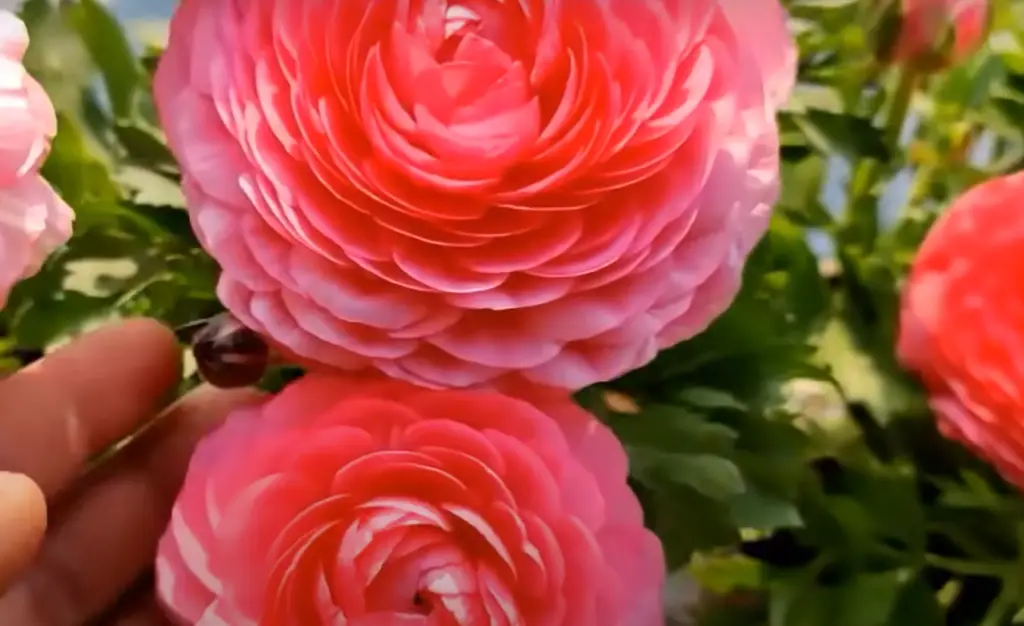
Make sure to use sharp scissors or pruning shears to snip off the faded blooms, as pulling them out may damage the stems. With regular deadheading, you can enjoy an extended flowering period and a healthier garden!
Will ranunculus come back year after year?
Yes, ranunculus are perennials which means they will come back every year. Most varieties are hardy to USDA zones 8-10, but you can also grow them as annuals if you live in cooler climates.
If you want your ranunculus to come back year after year, make sure to store the corms properly during winter and replant them in spring!
Can I use other plants with ranunculus?
Yes, you can combine ranunculus with other plants for a stunning garden display. Some of the best companions for ranunculus include larkspur, dianthus, and clematis.
Plant these together in clusters or groupings to create a beautiful and colourful landscape! You can also add ornamental grasses or perennials to finish off the look.
How often should I water my ranunculus?
Ranunculus plants need regular watering to stay healthy and vibrant. During the spring and summer months, make sure to keep the soil evenly moist but not soggy. Water your plants every few days or whenever the top inch of the soil feels dry.
In winter, reduce watering frequency – usually once a week is enough. Over-watering can lead to root rot, so be sure to check the soil before you water and adjust your watering schedule accordingly.
How can I get bigger ranunculus blooms?
To get bigger and more vibrant Ranunculus blooms, make sure to fertilise your plants regularly. Choose a balanced fertiliser and apply it according to package suggestions.
Mulching around the base of the plant will also help retain moisture, reduce weed growth, and provide nutrients as it breaks down.
Deadheading your plants regularly will also help to encourage more blooms. With the right care and attention, you can enjoy big, bold Ranunculus blooms all season long!
Can I use organic fertiliser for my ranunculus?
Yes, you can use organic fertilisers such as compost or manure on your ranunculus plants. This will provide them with nutrients while also helping to improve the soil’s structure and drainage.
Make sure to spread it evenly around the base of your plants – but not too close – as this will help to ensure that they get all the nutrients they need for healthy growth.
Do ranunculus attract butterflies?
Yes, ranunculus can be a great addition to your butterfly garden. They provide a bright burst of colour and also attract beneficial pollinators such as butterflies, bees, and hummingbirds.
To create an inviting environment for these winged guests, make sure to provide plenty of sunlight and water. You can also add flowering plants such as lilac or lavender to the garden to further encourage butterfly visits!
Do ranunculus need to be staked?
In some cases, you may need to stake your ranunculus plants. This is especially true if your plants are tall or in an area with windy conditions.
Make sure to use a sturdy but lightweight material such as bamboo or metal and provide enough support for the stems without crushing them.
Does pruning help ranunculus plants?
Yes, regular pruning can be beneficial for your ranunculus plants. Prune away any dead or diseased stems to encourage healthy growth and minimise the spread of infection.
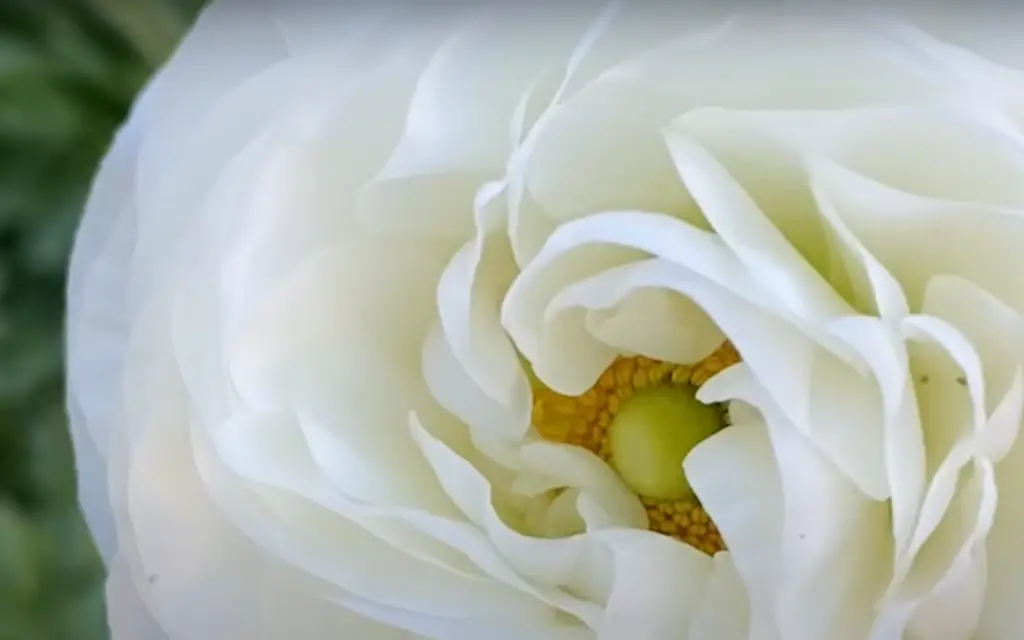
You can also use pruning shears to trim back overgrown stems and keep your plants looking neat and tidy. This will also make it easier for you to see the blooms and appreciate their unique beauty!
Do ranunculus need partial shade?
Most varieties of ranunculus prefer full sun conditions but some may benefit from partial shade during the hottest parts of summer. If your area is particularly hot, make sure to provide some afternoon shade for extra protection.
This will help protect your plants from overheating and ensure that they stay healthy and vibrant all season long!
What should I do with my ranunculus blooms after they have finished flowering?
Once your ranunculus blooms have finished flowering, you can either leave them in the garden or compost them. If left in the garden, they will provide shelter for beneficial insects such as bees and butterflies.
Composting the spent blooms is also a great way to add organic matter to your soil, which will help promote healthy growth in future seasons.
Does ranunculus flower in the winter?
Most varieties of ranunculus are deciduous and will go dormant during the cold winter months. However, there are a few varieties that can bloom during this time – such as ‘Christmas Dance’ or ‘Winter Star’.
These types produce bright white flowers and provide a beautiful pop of colour against the winter landscape! If you live in a mild climate, these varieties can be a great addition to your garden.
Can ranunculus be planted indoors?
Yes, you can easily grow ranunculus indoors as long as the conditions are right. Make sure to provide them with plenty of sunlight and also keep the soil moist but not soggy.
You may also need to use a grow light if the area is particularly dark. With proper care and attention, your indoor ranunculus plants will provide you with bright blooms all year long!
How can I propagate my ranunculus?
If you want to propagate your ranunculus plants, you can easily do so by dividing their corms. This should be done in spring when the plants are actively growing.
Carefully dig up your ranunculus and separate the corms using your hands or a sharp knife. Plant the divided corms in new locations, ensuring that they get plenty of sunlight and water.
Does ranunculus spread easily?
Ranunculus plants are not considered invasive and generally don’t spread too quickly. If planting in an area where you want to keep your garden contained, make sure to add a barrier around the base of the plant.
Mulching also helps to minimise weed growth and discourage runners from spreading out farther than they should.
Do ranunculus need to be deadheaded?
Yes, it is important to remove spent blooms from your ranunculus plants. This will encourage new growth and also help your plants look tidier and more vibrant.
Make sure to use sharp scissors or pruning shears when deadheading – this will help reduce the spread of disease and infection.
Deadheading can also help to delay the formation of seed heads, which can take away from the beauty of your blooms.
Is it possible to grow ranunculus in containers?
Yes, growing ranunculus in containers is definitely possible. Make sure to choose a container with good drainage and fill it with potting soil. Plant your ranunculus and water regularly, ensuring that the soil doesn’t get too soggy.
If you’re planting in a sunny spot, make sure to choose a container with dark colours as this will help keep your plants cool and prevent them from overheating. Enjoy bursts of bright blooms indoors all year long!
Does ranunculus need a lot of water?
Ranunculus plants are fairly drought-tolerant and don’t require too much water. However, they do need regular moisture during the warmer months in order to stay healthy and vibrant.
Make sure to check the soil regularly and give your plants a good drink when it starts to dry out – this will help them look their best and extend the flowering season.
Can ranunculus be grown from seed?
Yes, you can easily grow ranunculus from seed. Collect any ripe seeds that have developed over the season and plant them directly into the soil – make sure to choose a sunny spot with well-draining soil.

Keep your plants moist until they reach a few inches in height and then water them regularly. With some patience, you will be rewarded with a colourful display of blooms come the following year!
Do ranunculus attract bees?
Yes, ranunculus plants are great for attracting bees to your garden. Their bright colours and delicate petals make them irresistible to these buzzing pollinators! If you want to create a bee-friendly garden, make sure to plant plenty of ranunculus.
This will help maintain healthy populations of beneficial insects and also ensure that your plants are well-pollinated for maximum blooms!
Useful Video: How To Pre- Sprout Ranunculus Corms | Planting Ranunculus | Ranunculus Bulbs | Flower Farming
Conclusion
Properly planting ranunculus bulbs is an easy task with a bit of time and effort. Bulbs should be planted in an area of your garden that will provide enough sun to keep the plant healthy and thriving.
Make sure to dig a hole deep enough for the roots of the bulb itself, water regularly, fertilise each spring as growth begins, deadhead faded blooms, and remove any foliage that starts to yellow or die back.
With proper care and maintenance, you are guaranteed a beautiful show of ranunculus in your garden each spring season! And finally, enjoy the rewards of your hard work by admiring their spectacular elegance with friends and family!
References:
- https://grow.edenbrothers.com/planting-guide/ranunculus-bulbs/
- https://www.longfield-gardens.com/article/10-tips-for-growing-ranunculus





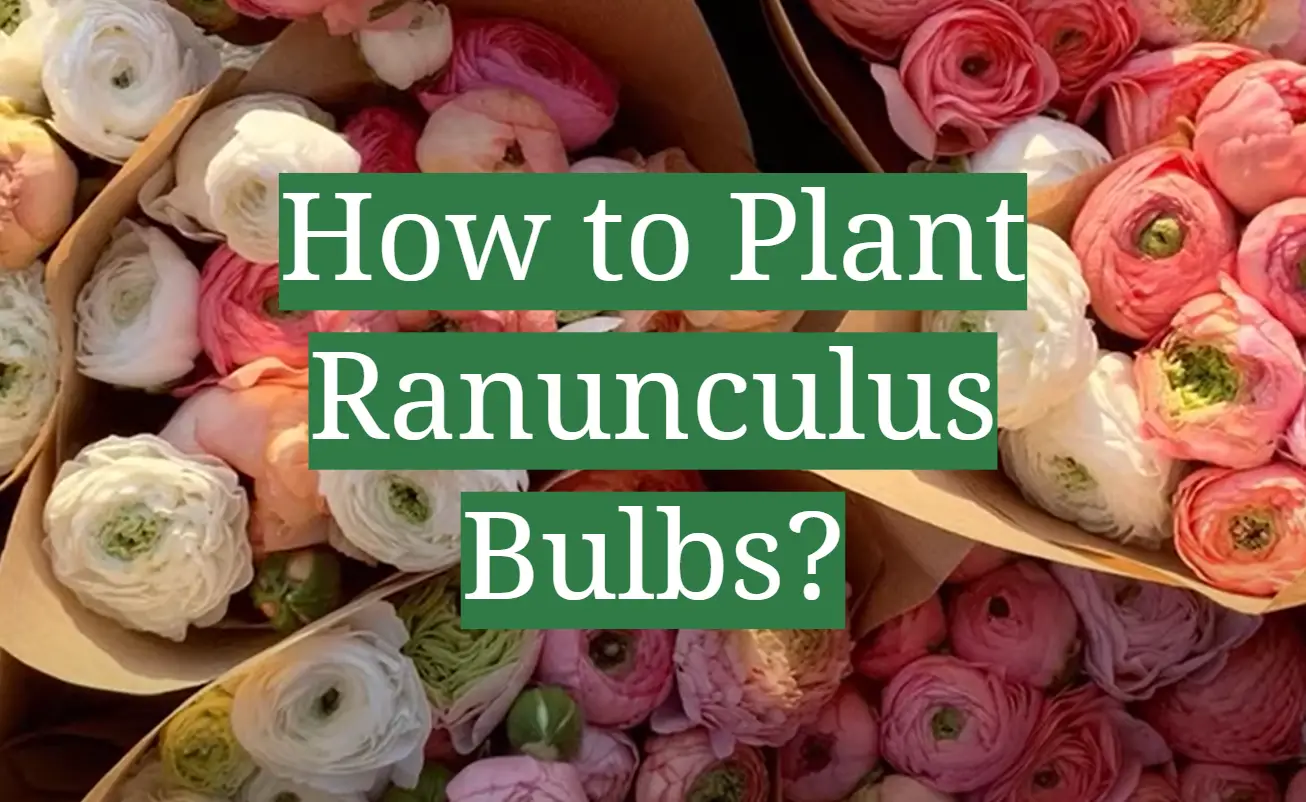




Leave a Reply
View Comments